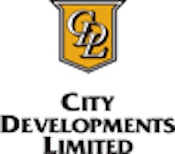Quantity surveyors who control the purse strings of a building project can play a key role in developing affordable green buildings, said experts on the opening day of the three-day International Green Building Conference.
Mr Eugene Seah, deputy chairman of construction consultancy Landon & Seah, said it is time for surveyors to get up to speed on sustainable building designs - because their decisions directly impact the long-term value of a building.
“Quantity surveyors can value-add when working with designers…If they are knowledgeable, they can contribute to the design process,” he told an industry seminar at the conference on Thursday at Marina Bay Sands.
Mr Seah said while analyzing the life-cycle costs and impacts of projects, he prioritized value over absolute cost.
For example, pre-fabricated concrete panels might cost 2 per cent more than concrete poured on-site, but a look at the bigger picture shows that they may save 3 per cent over the course of the project because they save time and manpower. They also have a smaller carbon footprint and take up less valuable floor space, he explained.
Sometimes, the value of certain aspects of a project - such as community goodwill, environmental impacts and worker safety - are harder to quantify but provide long-term benefits to the community, he said.
He cited one instance in which a contractor undertaking noisy construction in a residential neighbourhood was required to visit local homes prior to starting the work. On discovering that students were in the middle of exams, the contractor agreed to begin the work at the far end of the property to minimize the disturbance.
At zero cost, the builder generated significant community goodwill, said Mr Seah.
Improved worker productivity, which is currently a big issue in labour-scarce Singapore, is another value that the industry can add through careful advance planning. By introducing building elements that are standardized, simple or pre-fabricated into a design, architects can ease the construction process, he noted.
Some of the measures that improve these non-financial values may add a small cost to a building project, but the amount is negligible compared to the long-term benefits, he further noted.
While developing green buildings does incur extra upfront costs – green office buildings can cost an extra 4 to 5 per cent to build – the expense is decreasing as skills and expertise within the industry develop, he said.
Professor David Strong of The GreenAsia Group sustainability consultancy, who also spoke at the seminar,highlighted another challenge - the industry still lacks the expertise needed to create buildings that live up to their green designs.
“This is a serious issue that people don’t want to talk about,” he said. He added that architects were designing buildings that satisfied regulations but were not green in reality.
One example of this is London’s City Hall, which was designed with an innovative natural ventilation system to eliminate the need for air-conditioning. Once built, however, facility managers found that the building used over 50 per cent more energy than expected because cost consultants had mandated smaller, less expensive pipes that required extra energy to run.
The performance gap in this case was due to an expert taking a “rule of thumb” approach rather analysing the specific needs of the building – a common mistake in the industry, noted Professor Strong.
He also said that performance gaps have not stopped architects from advertising the green design aspects of their buildings – a process known as greenwashing that is common in the building industry.
To address this problem, the United Kingdom introduced a scheme that legally requires building owners to display certificates that state the energy performance of buildings on a yearly basis.
“[The certificates] have had a phenomenal impact…and made the whole area of architectural greenwash much more difficult,” said Professor Strong.
The availability of energy consumption information has created a “huge and growing concern” about actual performance, and is causing a market transformation, he added.
Professor Strong noted that some people in Singapore may be sceptical that such certificates would work here because of the added on burden on building managers. “They said the same thing in the UK,” he said.
Eco-Business.com’s coverage of the International Green Building Conference 2012 is brought to you by City Developments Limited (CDL).






















